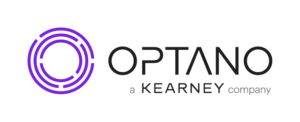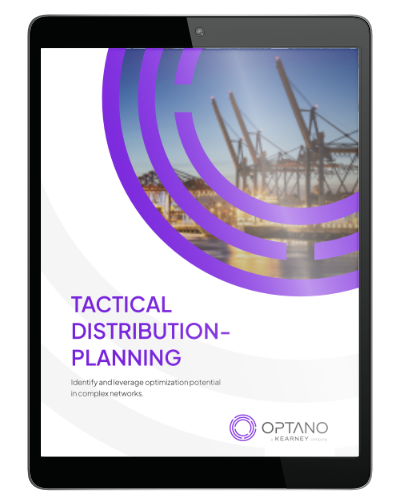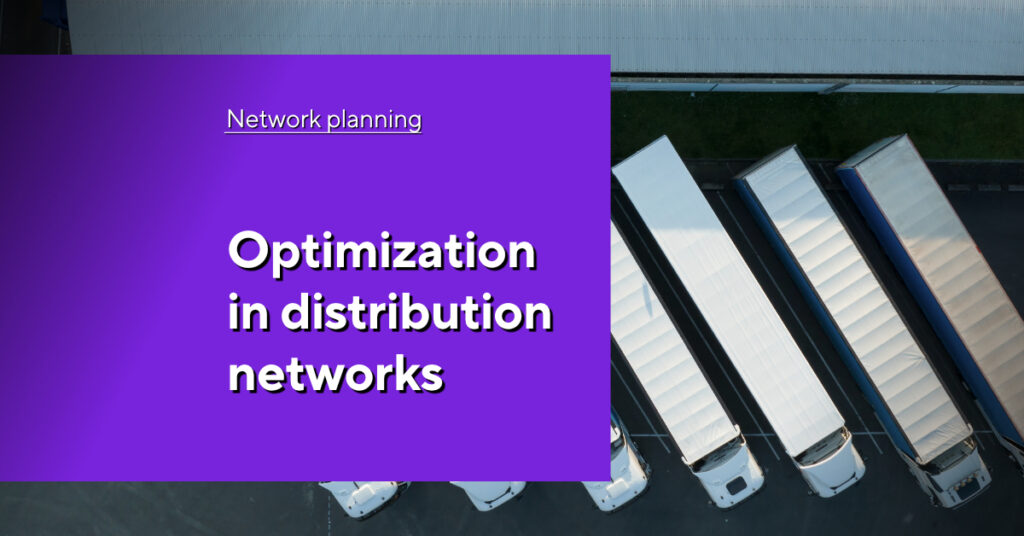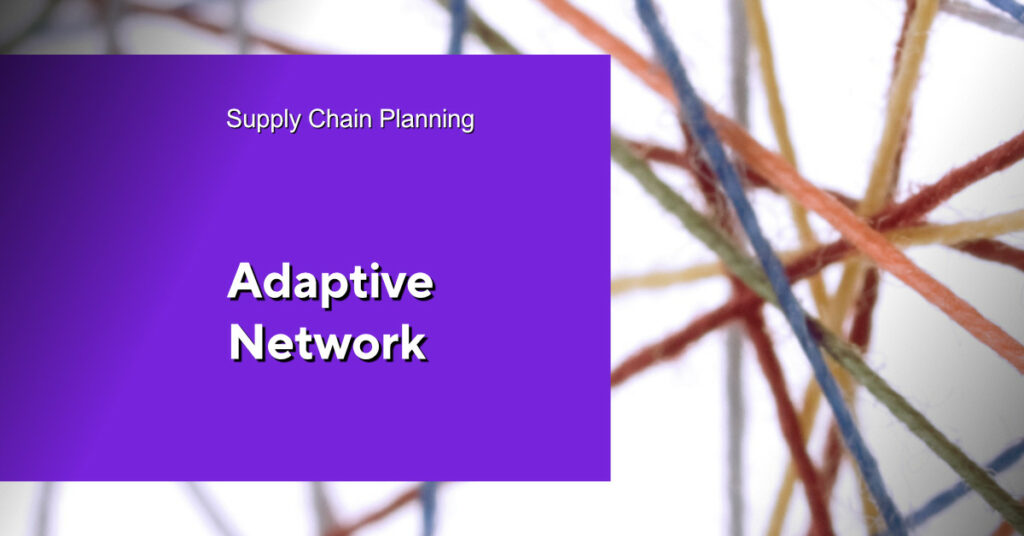Increased efficiency & delivery capability
Volatile demand, limited capacities, CO₂ budgets, and geopolitical risks — tactical distribution planning today means constantly navigating conflicting goals. How can companies manage their material flows dynamically, using flexible scenarios instead of a rigid annual plan? Denis Spiers explains why traditional planning has become risky, which decisions have the greatest impact, and how companies can start with a lean pilot.
Denis, you once said that traditional planning is more dangerous today than having no plan at all — what exactly did you mean by that?

Traditional planning creates a false sense of security: a static plan may look neat — until reality overtakes it at the first market shift. Today, cost structures, service requirements, and risks change within weeks, not years. Companies that stick to fixed routes, rigid allocations, or outdated scenarios often react too late — and that usually proves costly.
The alternative is continuous design and scenario thinking: instead of relying on a fixed plan, you constantly evaluate alternative network structures, routes, transport modes, and allocations — and consciously balance cost, service, and risk. This turns planning into a decision-driven process rather than a static document.
Which three decisions have the greatest impact in practice?

There are essentially three key factors:
Allocation – Who supplies whom?
Targeted assignment of customers to warehouses or hubs can significantly reduce distances, bottlenecks, and inventories — even with small adjustments.
Transport modes and consolidation logic
Systematically selecting and combining transport modes — whether road, rail, sea, air, or intermodal — and intelligently consolidating shipments where possible drive efficiency and cost savings.
Service level design
Instead of applying uniform service levels to all customers, a differentiated strategy by segment pays off. It prevents costly express deliveries and enables more targeted resource management.
Industry benchmarks show that optimized flow control typically results in 10–15% lower transport costs, 5–10 percentage points higher service levels, and 8–15% lower CO₂ emissions — depending on the starting point and network structure. These figures should be seen as indicative ranges.
Often, these levers are overlooked because they require cross-functional coordination: sales, logistics, production, and finance must make decisions together. Without clear scenarios and transparency, much of the potential remains untapped.
“Transparency and data quality” sound abstract. What minimum data is really needed to run valid scenarios?

Transparency and data quality are the foundation of any successful flow path optimization. To create valid scenarios, you don’t need an overload of data — just the right information: demand forecasts at the product and regional level, current transport and warehousing costs, capacities, lead times, and CO₂ factors per transport mode (if you want to include that aspect).
These are complemented by clear business rules such as service level classes, minimum quantities, or consolidation options. For an initial MVP, 8–12 weeks of historical data and up-to-date master data are often sufficient — as long as the data is consistent and relevant for decision-making. Everything else can be added step by step.
Many teams fear that “dynamic flow control” will lead to greater complexity. What would you say to them?

The concern about added complexity is understandable — but modern solutions show that the opposite can actually be true. Systems like OPTANO are designed to make decisions transparent and easy to manage. Users no longer need to know how to technically implement a change in the system — they just need to define what they want to achieve.
Predefined scenario modules and AI-driven recommendations help address typical challenges such as CO₂ budgets, disruptions, or mode shifts with just a few clicks. The interface remains user-friendly, the results are transparent, and planning becomes a flexible tool that adapts to actual needs — rather than a black box that adds more complexity.
More interesting articles
How do you integrate sustainability goals (e.g., CO₂ budgets) into day-to-day planning?

Today, sustainability, service quality, and cost efficiency can be managed together. Modern optimization solutions make it possible to flexibly balance these goals — for example, by setting a CO₂ budget as a boundary condition, ensuring specific service levels, and keeping overall costs under control.
In practice, this means companies can adjust transport routes, mode selection, and consolidation strategies to reduce emissions without compromising service or letting costs spiral. The key is to make the interdependencies between these factors transparent and to set priorities collaboratively based on the situation. This creates a planning approach that is sustainable, economically sound, and customer-focused at the same time.
Balancing cost, service level, and CO₂ is an important step — but how can companies respond when unexpected events suddenly put these goals under pressure? What helps them stay agile and capable of taking action even during disruptions?

Unforeseen events have become part of everyday life in the supply chain. To stay in control, companies need a structured scenario comparison: the current network is contrasted with a disruption scenario — where routes, locations, or transport modes are limited — and alternatives are evaluated.
Key metrics such as “service at risk,” cost per order, CO₂ impact, and resource utilization make effects immediately visible. With a library of predefined scenarios — from port closures to mode shifts or sudden demand spikes — decisions can be made faster and with greater transparency. This turns uncertainty into a manageable framework for action — and cuts response times from weeks to hours.
Many companies recognize the opportunities that modern network planning offers but hesitate because they fear the effort of a large-scale project. What do you recommend to make it easy to get started and to quickly experience the benefits?

Getting started doesn’t have to be complicated or resource-intensive. Often, it’s enough to begin with a clearly defined part of the network — for example, a specific region, a few locations, or a particular product group. This keeps the effort manageable and delivers visible results quickly. Experience shows that those who deliberately start small and focus on the essentials build a solid foundation for further improvements — and overcome the perceived hurdle of a large-scale project almost effortlessly.
Thank you, Denis, for the conversation.
Next level distribution planning
If you’re looking to take your distribution planning to the next level, Flowpath Optimization should be a core part of your tactical planning strategy. The benefits are measurable, implementation is feasible – and the strategic value is substantial.

Find out in the OPTANO fact sheet how companies are using modern decision-making models to master complex challenges in the supply chain: from selecting efficient modes of transport and intelligent warehouse placement to strategic network design. Discover how you can reduce costs, increase service levels, and achieve sustainability goals—all based on reliable analyses rather than gut feelings. Download the fact sheet now and take your network planning to the next level!
To obtain our factsheet, all you need to do is enter your contact details in the space below. A pop-up window will then open to download the whitepaper. Please note that by providing us with your email address, you agree that we may contact you on this topic. You may revoke this agreement at any time by contacting privacy@optano.com.






